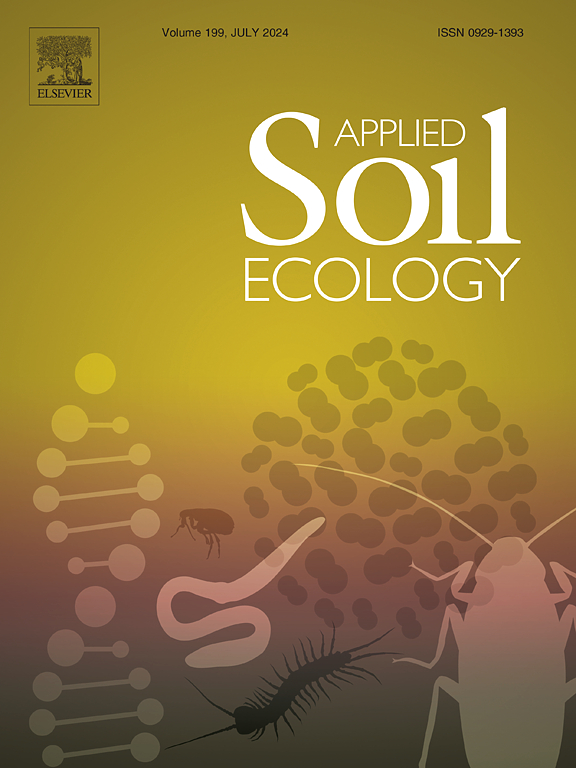Plant mycorrhizal type and molybdenum (Mo) contamination co-shape rhizospheric fungal communities in molybdenum mining areas
IF 4.8
2区 农林科学
Q1 SOIL SCIENCE
引用次数: 0
Abstract
Plants can selectively recruit rhizospheric microbiomes with specific ecological functions for their better survival, which are further shaped by environmental stress, such as soil contamination. However, little is known about the rhizospheric fungal communities in different mycorrhizal plants subjected to long-term molybdenum (Mo) contamination. For this purpose, we collected rhizospheric soil samples from the China's largest Mo mining area to explore how plant mycorrhizal type and Mo contamination level shape rhizospheric fungal communities. High-throughput sequencing results showed that the diversity of rhizospheric fungi was significantly higher in arbuscular mycorrhizal (AM) plants than in ectomycorrhizal (ECM) plants under heavy Mo contamination. The number of unique amplicon sequence variants (ASVs) in AM plants was greater than that of ECM plants, and this difference decreased with the increasing Mo level. Moreover, the potential biomarkers of rhizospheric fungi were differently enriched in AM and ECM plants under various Mo stress. FUNGuild functional prediction analysis indicated that the abundance of some ectomycorrhizal-associated fungi decreased with the increasing Mo level. The network complexity of rhizospheric fungi of ECM plants was greater than that of AM plants, whereas Mo contamination drove both networks more complex. Mo level mainly altered the composition of rhizospheric fungal communities in ECM plants, but not in AM plants. To conclude, plant mycorrhizal types and Mo contamination levels jointly shaped rhizospheric fungal communities in Mo mining areas. Our results indicate that AM plants may have evolved a survival strategy adaptive to long-term Mo contamination via recruiting rhizospheric fungi, and thus show great potential for ecological restoration in Mo mining areas.

求助全文
约1分钟内获得全文
求助全文
来源期刊

Applied Soil Ecology
农林科学-土壤科学
CiteScore
9.70
自引率
4.20%
发文量
363
审稿时长
5.3 months
期刊介绍:
Applied Soil Ecology addresses the role of soil organisms and their interactions in relation to: sustainability and productivity, nutrient cycling and other soil processes, the maintenance of soil functions, the impact of human activities on soil ecosystems and bio(techno)logical control of soil-inhabiting pests, diseases and weeds.
 求助内容:
求助内容: 应助结果提醒方式:
应助结果提醒方式:


